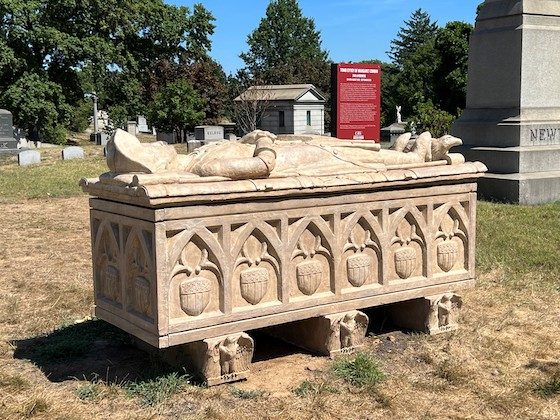TOMB EFFIGY OF MARGARET CORBIN
Zaq Landsberg
On view ON BATTLE HILL

This sculpture pays tribute to the first woman believed to have fought in battle for the United States. On November 16, 1776, Margaret Corbin (1751–1800) accompanied her husband in the Battle of Fort Washington in northern Manhattan as a camp follower. During the American Revolution, women often faced the difficult choice of staying behind to protect their homes or leaving them to perform traditionally domestic duties for their husbands or fathers on the march. When Corbin’s husband was killed by enemy fire, she took his place in the fight, loading and firing his cannon until she was severely wounded. For her service, Congress granted her a lifelong soldier’s pension.
In 1926, The Daughters of the American Revolution reinterred what was thought to be Corbin’s remains at the Military Academy in West Point. In 2017, an archeological study revealed that those remains did not belong to Corbin, leaving her final resting place unknown. This sculpture’s placement at Green-Wood contributes to the current conversation about the representation of women in public monuments. Nearby, a statue of Minerva, the Roman goddess of wisdom, stands at the Altar to Liberty and commemorates the Battle of Brooklyn (fought on this site on August 27, 1776). Across the harbor is the Statue of Liberty, which has welcomed immigrants to the United States for nearly two centuries.
The Tomb Effigy of Margaret Corbin was funded in part by NYC Parks’ Clare Weiss Emerging Artist Award, Janet and John Koehne.